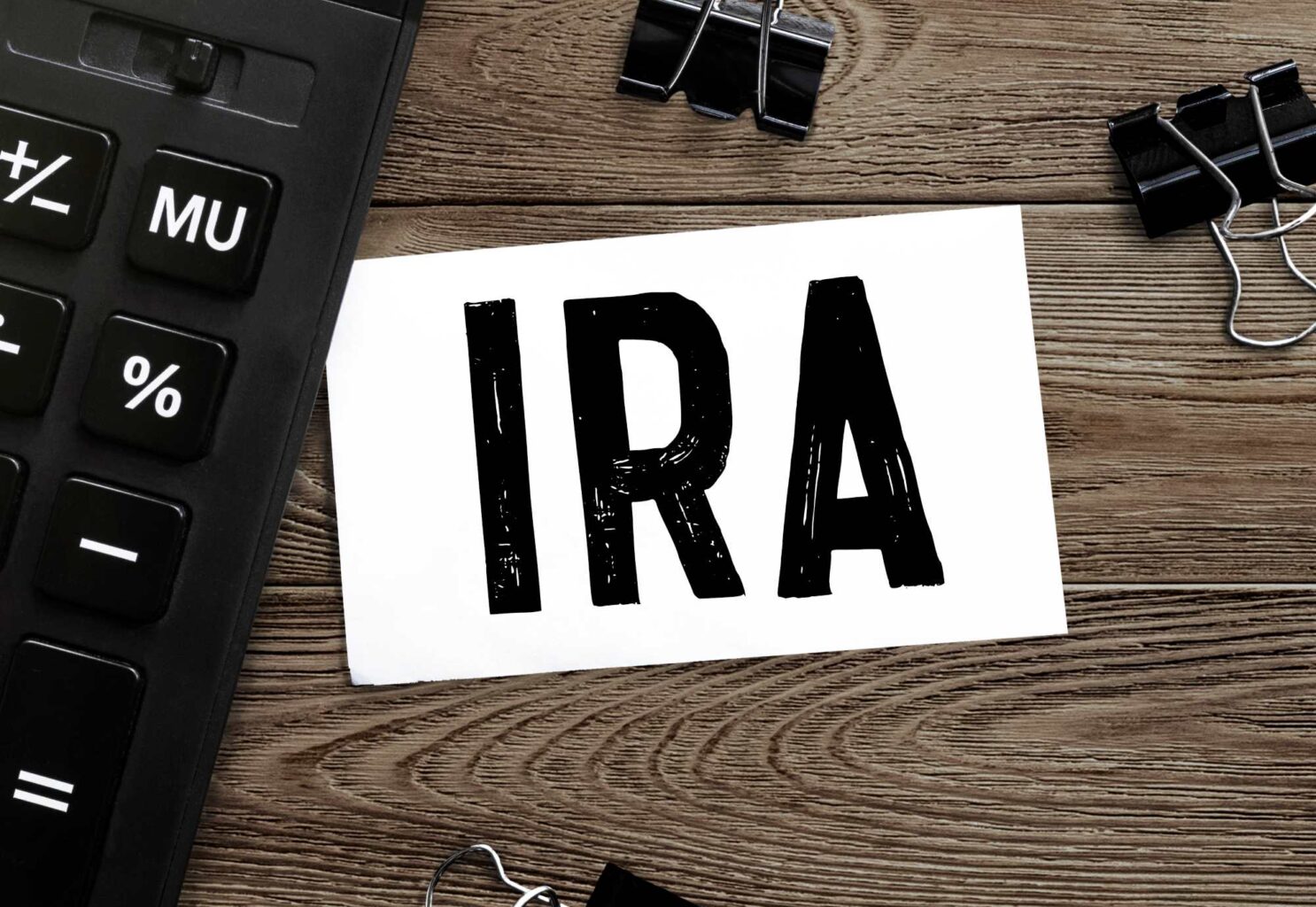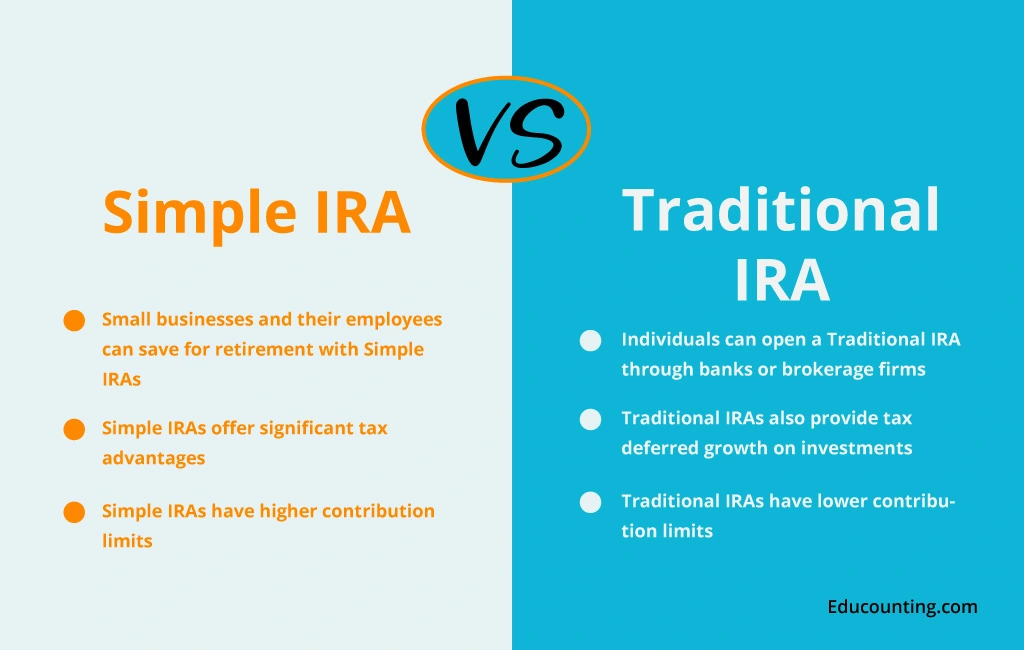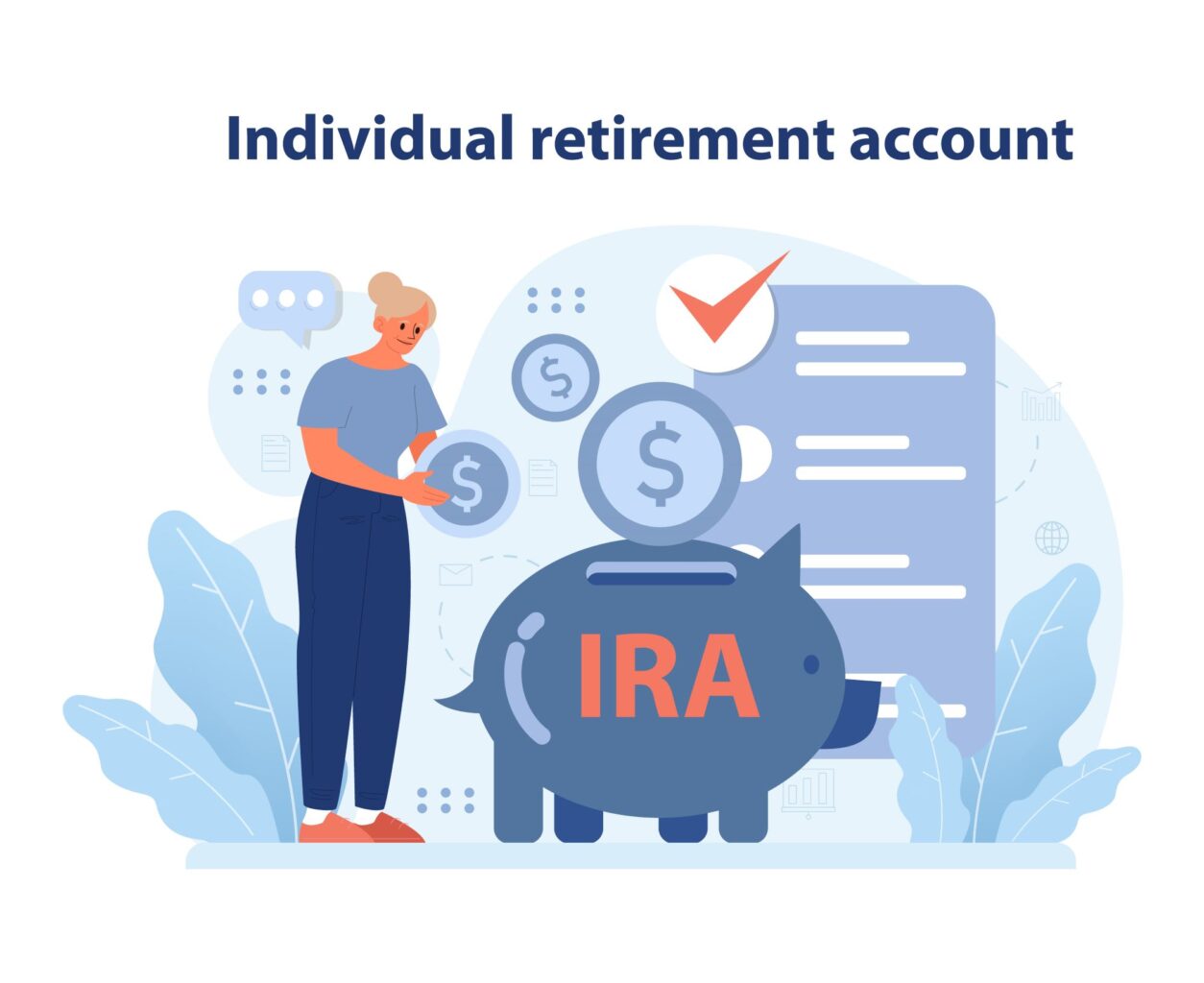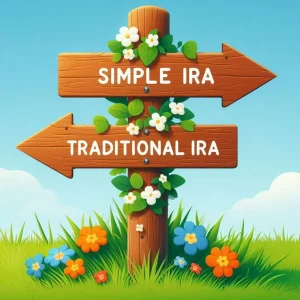When it comes to planning for retirement, choosing the right investment vehicle is crucial. IRAs (Individual Retirement Accounts) are popular among the various options available due to their tax advantages and flexibility. However, with several types of IRAs to choose from, understanding their differences is essential for making an informed decision. Two common types are the Simple IRA and the Traditional IRA. Both offer unique benefits and are suited for different types of investors and situations.
So, what exactly sets these two accounts apart? This comprehensive guide will compare Simple IRA vs. Traditional IRA, including their structures, eligibility requirements, contribution limits, and potential benefits and drawbacks. By the end of this article, you’ll clearly understand which IRA might be the best fit for your retirement planning needs.

What is a Simple IRA?
A Simple IRA (Savings Incentive Match Plan for Employees) is a type of retirement account designed to help small business employers and their employees save for retirement. It offers a straightforward and convenient way for both parties to contribute to an employee’s retirement savings. Small business employers set up these plans and allow employer and employee contributions, making building a substantial retirement fund easier over time.
How Does a Simple IRA Work?
One of the key benefits of a Simple IRA plan is its tax advantages. Contributions are made before income taxes are deducted, which reduces the employee’s taxable income. While these contributions are not tax-deductible on tax returns, they lower the amount of income taxed upfront. For sole proprietors, salary reduction and matching contributions can be deducted using Form 1040, providing additional tax relief.
In terms of contribution limits, employees can contribute up to $15,500 in 2023 and $16,000 in 2024. Additionally, those aged 50 and older can take advantage of the IRS catch-up provision, which allows them to contribute an extra $3,500 in both 2023 and 2024. Employers have two options for contributing: they can either match employee contributions dollar for dollar up to 3% of the employee’s compensation or contribute a fixed 2% of the employee’s compensation regardless of the employee’s contributions.
Another advantage of the Simple IRA plan is the power of compound interest, which can significantly grow retirement savings over time. Both the contributions and any earnings within the account are tax-deferred, meaning they are not taxed until the money is withdrawn during retirement. This allows the investment to grow without being reduced by taxes each year.
However, there are some restrictions to keep in mind. Employees must wait two years before they can roll over their employer-contributed funds into another retirement account. This waiting period ensures that the funds remain in the Simple IRA for a minimum duration, encouraging long-term savings and investment growth.
What is a Traditional IRA?
A Traditional IRA (Individual Retirement Account) is a standalone retirement account that individuals can open through financial institutions such as banks or brokerage firms. Unlike employer-sponsored plans, a Traditional IRA is not connected to your workplace. It allows you to make contributions that benefit from compound interest and tax-deferred growth over time, helping you build a substantial retirement fund independently.
One of the key features of a Traditional IRA is its contribution limits. For 2023, individuals can contribute up to $6,500, or $7,500 if they are 50 years or older. These limits increase to $7,000 and $8,000, respectively 2024. However, the contribution cannot exceed your total income for the year. This makes the Traditional IRA a flexible option for a wide range of income earners, allowing them to save for retirement even if they already participate in other retirement plans.
A major benefit of contributing to a Traditional IRA is the potential tax deduction. Contributions are made on a pre-tax basis, meaning you can deduct the amount from your taxable income for that year, which can reduce your overall tax bill. The money within the IRA grows tax-deferred, meaning you won’t pay taxes on the earnings until you withdraw the funds during retirement. This can provide a significant tax advantage during your high-earning years, deferring taxes until you are potentially in a lower tax bracket in retirement.
Simple IRA vs. Traditional IRA: Key Differences
The key differences between a simple IRA vs. traditional IRA are their structure, eligibility, contribution limits, and employer involvement. Simple IRA rules are specifically designed for small businesses, allowing both employer and employee contributions. At the same time, a Traditional IRA is available to anyone with earned income and does not involve employer contributions.
Understanding the differences between various retirement accounts is crucial when planning for retirement. Simple IRAs and Traditional IRAs are two popular options, each with unique features and benefits. Simple IRA vs. Traditional IRA, here are some key differences:

Unlike a Traditional IRA, a Roth IRA is funded with after-tax money. The major benefit of a simple Roth IRA is that withdrawals during retirement are tax-free. However, one downside is that contributions to a Roth IRA are not tax-deductible in the year they are made.
However, it’s important to be aware of the penalties associated with early withdrawals from a Traditional IRA. If you withdraw funds before the age of 59½, you may incur a 10% penalty on the amount withdrawn and pay any applicable income taxes. There are specific hardship exceptions defined by the IRS that can waive this penalty, but otherwise, it’s crucial to plan your withdrawals carefully to avoid unnecessary costs.
Overall, a Traditional IRA is a valuable retirement savings tool that offers tax-deferred growth and potential tax deductions on contributions. It is an excellent option for individuals looking to supplement their retirement savings beyond employer-sponsored plans. By understanding the contribution limits, tax benefits, and withdrawal rules, you can effectively use a Traditional IRA to enhance your financial security in retirement.
1. Participation & Eligibility Rules
Simple IRAs are specifically designed for small business employers and their employees. Employers with fewer than 100 employees who earn at least $5,000 annually can set up a Simple IRA. Employees who have earned at least $5,000 in any two previous years and are expected to earn at least $5,000 in the current year are eligible to participate. This makes Simple IRAs an accessible option for small businesses and their staff.
Traditional IRAs are more flexible regarding eligibility. Anyone with earned income, including wages, salaries, or tips, can contribute to a Traditional IRA. There are no specific income thresholds or age requirements for opening a Traditional IRA, making it accessible to a broad range of individuals. This flexibility allows many people to take advantage of the tax benefits associated with Traditional IRAs.
2. Contribution Limits
Simple IRAs have higher contribution limits compared to Traditional IRAs. For 2024, employees can contribute up to $16,000 per year, with an additional $3,500 catch-up contribution for those aged 50 and older. Employers are also required to contribute by matching employee contributions up to 3% of their salary or by contributing a fixed 2% of the employee’s salary. These higher limits can significantly boost retirement savings.
Traditional IRAs have lower contribution limits. For 2024, individuals can contribute up to $7,000 annually, with a $1,000 catch-up contribution for those 50 and older, for a total of $8,000. These limits apply to all Simple and Traditional Roth IRAs combined, which might be a drawback for those looking to maximize their retirement savings through multiple accounts.
3. Tax Advantages
Simple IRAs offer significant tax advantages. Contributions are made with pre-tax dollars, which reduces taxable income for the year. The investments grow tax-deferred, meaning you don’t pay taxes on the gains until you withdraw the funds in retirement. This allows the account to grow more rapidly compared to taxable accounts.
Traditional IRAs also provide tax-deferred growth on investments. Contributions can be tax-deductible, depending on your income and participation in employer-sponsored retirement plans. This immediate tax deduction can lower your taxable income for the year. However, taxes will be due upon withdrawal, similar to Simple IRAs.
4. Investment Options
Both Simple IRA vs. Traditional IRA offer a wide range of investment options. You can invest in stocks, bonds, mutual funds, certificates of deposit (CDs), and exchange-traded funds (ETFs). This variety allows you to diversify your portfolio and tailor your investments to your risk tolerance and financial goals. The flexibility in investment options is a significant advantage of both types of IRAs.
5. Withdrawal Rules
Both Simple and Traditional IRAs are designed for long-term retirement savings, so they have penalties for early withdrawals. If you withdraw funds before the age of 59½, you will incur a 10% penalty on top of any taxes owed. Simple IRAs have an additional rule: if you withdraw funds within the first two years of participation, the penalty increases to 25%.
Both types of IRAs require you to start taking Required Minimum Distributions (RMDs) starting between ages 73-75, depending on your birth year. This means you must begin withdrawing a certain amount each year, even if you don’t need the funds. This rule ensures that the accounts are eventually used for their intended purpose—funding retirement.

Pros and Cons of Simple IRA
Pros
1. Employer Contributions: Employers are required to contribute to employees’ SIMPLE IRA accounts. This can be through matching contributions of up to 3% of the employee’s compensation or a fixed contribution of 2%. This employer involvement can significantly enhance retirement savings.
2. Tax Benefits: Contributions to SIMPLE IRAs are made with pre-tax dollars, reducing the employee’s taxable income for the year. While these contributions are not tax-deductible on tax returns, they lower the amount of income subject to tax upfront. Sole proprietors can deduct both salary reduction contributions and matching contributions on their tax returns and take advantage of Simple IRA tax benefits.
3. Higher Contribution Limits: For 2023, employees can contribute up to $15,500, and this limit increases to $16,000 in 2024. Employees aged 50 and older can make additional catch-up contributions of $3,500, both in 2023 and 2024. These higher limits allow for substantial retirement savings.
4. Tax-Deferred Growth: Like Traditional IRAs, the investments in SIMPLE IRAs grow tax-deferred. Taxes on the contributions and earnings are not paid until the funds are withdrawn, typically during retirement, which can allow the investment to grow more efficiently over time.
Cons
1. Limited Employee Tax Benefits: While contributions reduce taxable income, they are not tax-deductible on individual tax returns. This might limit the immediate tax benefits compared to other retirement accounts where contributions might be directly deductible.
2. Employer Constraints: Employers with more than 100 employees who earn at least $5,000 annually cannot offer SIMPLE IRAs. This restriction limits the availability of SIMPLE IRAs to small businesses and excludes larger companies from using this plan.
3. Early Withdrawal Penalties: Employees who withdraw funds before the age of 59½ face a 10% penalty on the withdrawn amount, in addition to income taxes. If funds are withdrawn within the first two years of participation, the penalty increases to 25%, making early withdrawals costly.
4. Two-Year Waiting Period: Employees must wait two years before they can roll over their employer-contributed funds into another retirement account. This waiting period restricts the flexibility of managing retirement funds in the early years of participation.

How to Choose Between Simple IRA and Traditional IRA
Choosing between Simple IRA vs. Traditional IRA depends on several factors, including your employment status, contribution capacity, and whether you are an employer or an individual. A Simple IRA might be more suitable if you own a small business and wish to offer a simple retirement plan with mandatory employer contributions. Conversely, a Traditional IRA may be better if you seek flexible retirement savings options without employer involvement.
Employer Availability
A SIMPLE IRA is typically set up through your employer, usually a small business with 100 or fewer employees. If your employer offers a SIMPLE IRA, this plan could be a great way to save for retirement with the added benefit of employer contributions. On the other hand, a Traditional IRA is set up by the individual, making it available to anyone with earned income, regardless of their employer’s retirement plan offerings.
Contribution Limits and Requirements
When comparing SIMPLE IRA vs. Traditional IRA, it’s important to consider the contribution limits and requirements. The SIMPLE IRA allows for higher annual contributions. For instance, in 2024, you can contribute up to $16,000 to a SIMPLE IRA, with an additional $3,500 catch-up contribution if you are 50 or older. Employers are also required to contribute to your SIMPLE IRA, either through matching contributions up to 3% of your salary or a fixed 2% contribution, regardless of your own contributions.
In contrast, the contribution limits for a Traditional IRA are lower. In 2024, the maximum contribution is $7,000, or $8,000 for those aged 50 and older. While Traditional IRA contributions can be tax-deductible, the deductibility may be limited if you or your spouse are covered by a retirement plan at work and your income exceeds certain levels.
Tax Considerations
Both SIMPLE IRAs and Traditional IRAs offer tax-deferred growth on your investments. This means you won’t pay taxes on the earnings until you withdraw the funds during retirement. However, SIMPLE IRA contributions are made with pre-tax dollars, reducing your taxable income for the year. Traditional IRA contributions can also be tax-deductible, but the rules are more complex and depend on your income and whether you are covered by an employer-sponsored retirement plan.
Flexibility in Contributions
A significant advantage of a SIMPLE IRA is that it involves employer contributions, which can substantially boost your retirement savings. You might benefit from the higher contribution limits and the additional employer contributions associated with a SIMPLE IRA if eligible for both plans. However, a Traditional IRA might be more suitable if your employer does not offer a SIMPLE IRA or if you want more control over your retirement savings.
Having Both Accounts
It’s possible to have both a SIMPLE IRA and a Traditional IRA. This can provide additional flexibility and the potential for greater retirement savings. However, keep in mind that there are limits on the tax deductions you can claim for Traditional IRA contributions if you also participate in a SIMPLE IRA.
Tips on Investing for Retirement
Planning for retirement is a crucial financial goal, and the earlier you start, the better off you’ll be. Regardless of your age, there are strategies you can implement to enhance your retirement savings. Here are seven practical tips to help you maximize your savings and ensure a comfortable retirement.
1. Start Early
The most important step in boosting your retirement savings is to start now. Time is your greatest ally because it allows your investments to grow through compound interest. The sooner you begin, the more your money can grow over time.
2. Maximize Your 401(k) Account Benefit
If your employer offers a 401(k) plan, take full advantage of it. Contributing to a 401(k) allows you to invest pre-tax dollars, reducing your taxable income and significantly boosting your retirement savings.

3. Meet Your Employer's Match
Many employers offer a matching contribution to your 401(k) simple IRA. This is essentially free money for your retirement. Ensure you contribute enough to get the full match from your employer, as it can significantly increase your retirement fund.
4. Don’t Miss Out on an IRA
In addition to your 401(k), consider opening an Individual Retirement Account (IRA). IRAs offer tax advantages and a wide range of investment options, making them a valuable addition to your retirement savings strategy.
5. Take Advantage of You're Age (for 50+)
If you are 50 or older, you can make catch-up contributions to your retirement accounts. For 401(k) plans, the catch-up limit is an additional $7,500; for IRAs, it’s an additional $1,000. These extra contributions can help you boost your savings as you approach retirement.
6. Make Savings a Habit
Set up automatic contributions to your retirement accounts. By automating your savings, you ensure consistent contributions and reduce the temptation to spend the money elsewhere. This approach helps build your retirement fund steadily over time.
7. Reduce Expenses
Reducing unnecessary expenses can free up more money to save for retirement. Review your budget regularly and look for areas where you can cut back. Redirect the savings into your retirement accounts to grow your nest egg.
Final Words
Comparing Simple IRA vs. Traditional IRA and understanding the differences is crucial for effective retirement planning. Both plans offer unique benefits and potential drawbacks, making them suitable for different types of investors. By evaluating your financial goals, contribution capacity, and employment status, you can make an informed decision that aligns with your long-term retirement objectives.
For more detailed insights and advice on retirement planning, explore our other blogs at EduCounting. Our comprehensive guides and expert articles are designed to help you navigate the complexities of financial planning and achieve a secure and prosperous retirement.









